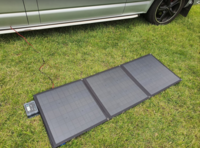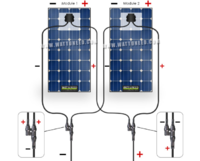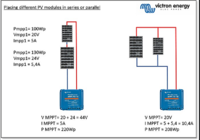Hi
@Dellmassive, thanks for kicking off his brilliant thread with loads of great insights. It’s convinced me I need to go down the portable solar route and the 100W area seems to be the sweet spot for price, size and yield. However, I’m pretty much torn between the Lensun ultralight folding 100W panels and the Bluefusion 120W kit. I’ve already got an MPPT controller so we can discount the pros and cons of the bundled units, so how would you compare the relative quality of the two panels and fabrics? Does the Bluefusion panels have a similar non-reflective bobbly surface to the Lensun? Do you think the additional 20W of the Bluefusion is likely to deliver noticeable real world benefit?
On a more interesting note, you’re next test should explore combining multiple portable panels sets in series to see wether you get a substantially better yield. According to the Victron manual, the larger difference between VOC and Vbatt should result in significantly improved performance in lower light and partial array shading situations.
The Lensun is a better quality build and has better "cells" internally. Most now have the matt finish to help yield . . .
having said that the BlueFusionhas a better build quality than the ACOPOWER - But both are very good.
Lensun quote the full specs . .

Bluefusion just say they use "solarWorld Cells" from Germany.

.......................
100W is a nice size panel, you normally get around 6A (ISC)
------------
Regarding series linking of non similar panels . . .
I have done this myself, but snot documanted it on here.
there are pros and cons . . .
i have 3x150w panels series linked on the shed build (450W @ 75V VOC on a victron 100/20):
Solar Sheds & Other Non-T6 Solar Projects - How We Done It - @Pete C requested it, so here it is . . . . . Dell, What do the batteries in your shed power ? I too have a solar powered shed - perhaps we should have a separate thread for sheds :) Pete Lets Post here any NON - T6 related ECO...

www.t6forum.com
what i found was that there theory dosent always work out . .
due to the differences in VOC and ISC from panel to panel you get a net effect of "down rating" to the weakest link . .
series linking and a higher VOC is the most efficient, you can use thinner cables etc longer runs . . . but you need a better controller . . . etc etc. Shading is a real problem though as ANY SLIGHT SHADE will bring down the whole pannel array to its knees.
on the other had you have Parallel combining . . . which i done at T6F summer camp 2020.
here i combined a 200W Lensun fold out, with 2x 110W (420w total) Lensun flexables . . . all together with some 4way MC4 branch connectors . . . then run one MC4 cable back to the Victron 100/20.
single panel shading doesnt effect the whole array . . just one panel . .

.
branch connector 1-4 . . .
Eidoct 1 Pair Solar Energy Panel MC4 T Branch Connectors Cable Coupler Combiner - 1 Male to 4 Female(M/4F) and 1 Female to 4 Male(F/4M): Amazon.co.uk: Garden & Outdoors
branch connector 1-3 . . .
ANFIL T-type MC4 Branch Cable Connectors Coupler Combiner Solar Panel - 1 Male to 3 Female (M/3F) and 1 Female to 3 Male (F/3M): Amazon.co.uk: Business, Industry & Science
branch connector 1-2 . . .
MC4 Solar Panel Branch Connector, Multi-Branch Optional - Male Female Solar Energy Panel MC4 T Branch Connectors Cable Coupler Combiner for solar panels,Photovoltaic Systems (M/2F, F/2M): Amazon.co.uk: Business, Industry & Science

running this lot:

i also had the Bluefusion 120w charinging the Leisure battery on the van , . . . ( via dash socket)

via a Renogy voyager 20A PWM controller - which is awseome BTW . .
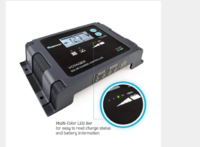
.
we also had the BlueFusion 50W on the dash inside running the starter battery via dash socket
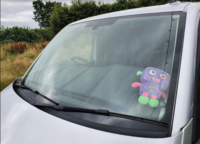
120W BF . . . The Renogy is IPx rain proof . . .
